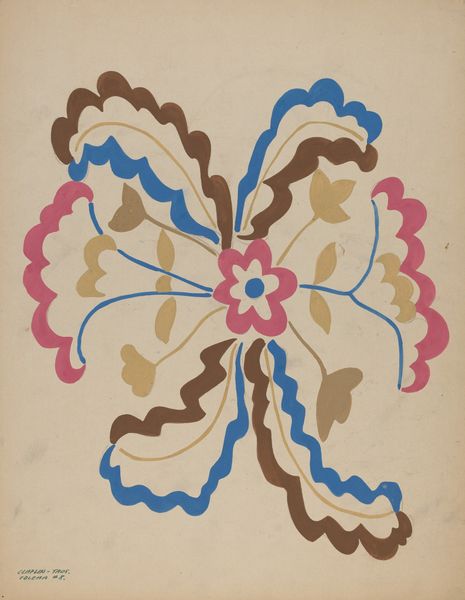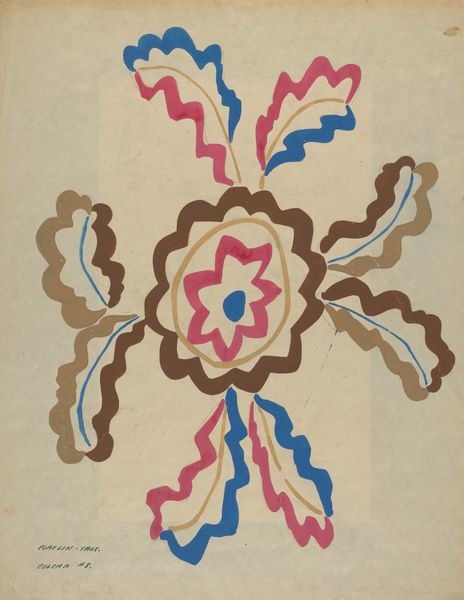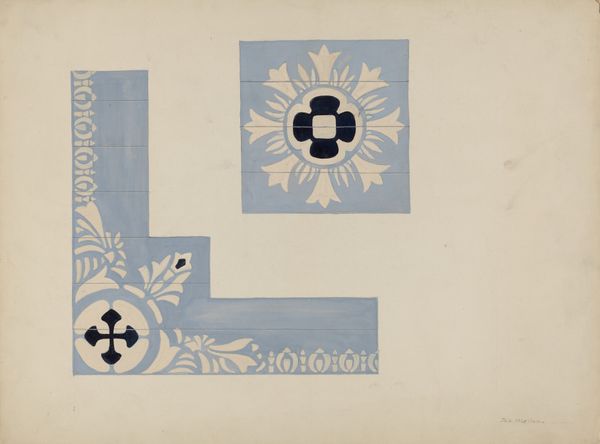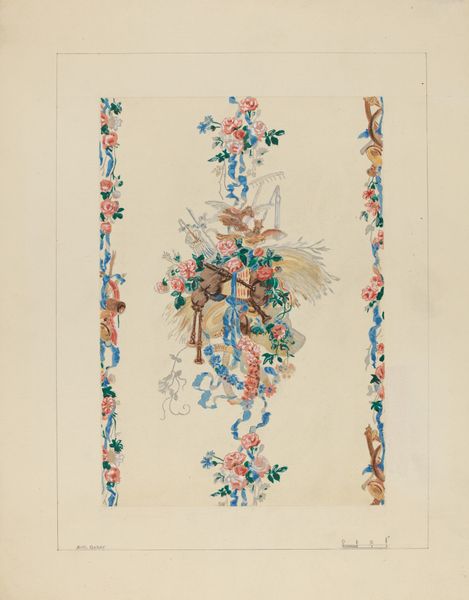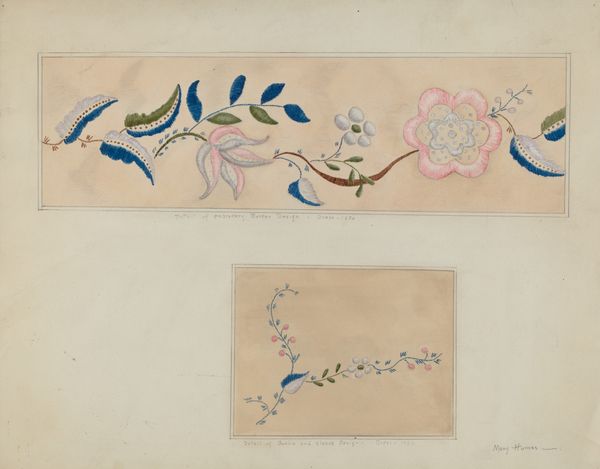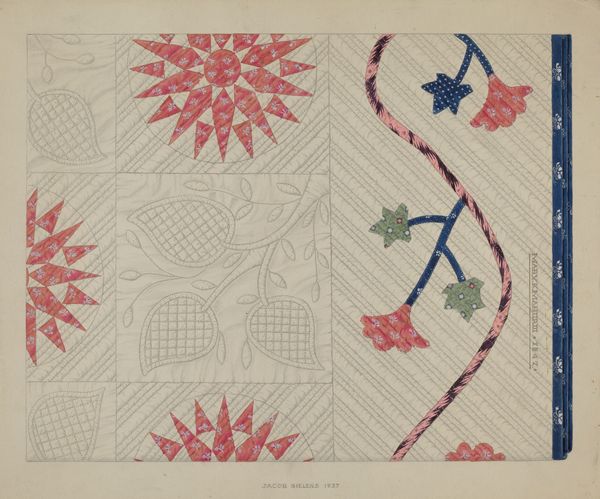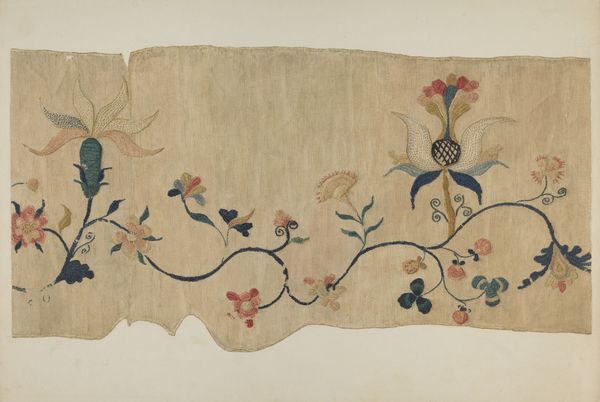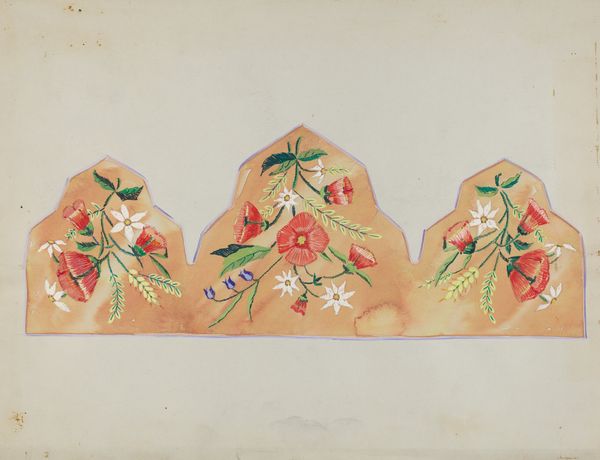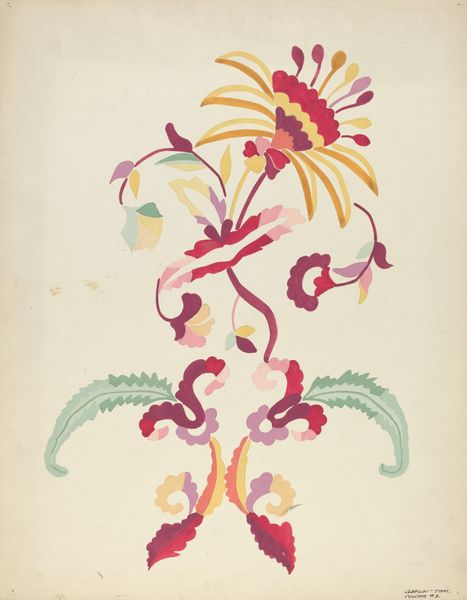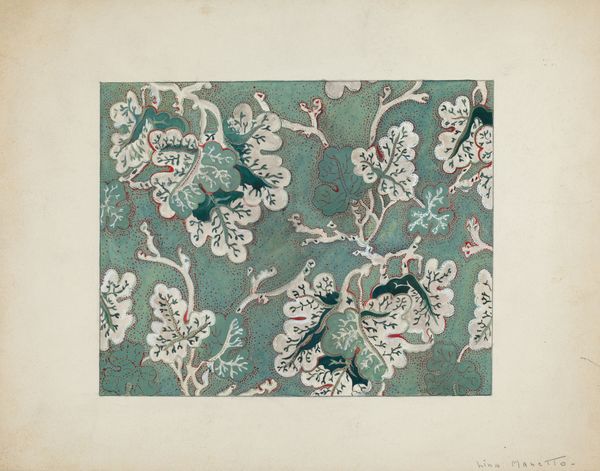
Dimensions: overall: 35.7 x 45.9 cm (14 1/16 x 18 1/16 in.) Original IAD Object: 48" long; 36" wide
Copyright: National Gallery of Art: CC0 1.0
Curator: Welcome. Today, we are exploring "Colcha," a watercolor drawing created by Majel G. Claflin between 1935 and 1942. Editor: My first thought: whimsical! There's something playful about the palette, the gentle asymmetry. The shapes float nicely across this plane. Curator: Indeed. Claflin’s work emerges during a period of significant cultural introspection in the United States, specifically in the context of the New Deal and the Federal Art Project. The design resembles the traditional "Colcha" embroidery practiced by Hispana women in New Mexico, tying it to questions of regional identity, gendered labor, and the preservation of cultural heritage amidst modernization. Editor: Tell me more about the way this translates through medium, color, shape. The watercolors are translucent, almost ethereal; these choices soften the design, lending it an optimistic quality. The limited palette — pink, brown, shades of blue, beige background — offers structural cohesion while highlighting subtle textural differences. Note also that rhythmic alternation of leaf, blossom, and stem! Curator: Precisely. Claflin, who taught art at San Diego State Teachers College and was involved with the Spanish Arts Renaissance movement in Southern California, found inspiration in early Spanish Colonial art and craft. Her position within these circles enabled her to draw attention to the contributions of often marginalized communities, like the descendants of Spanish settlers. It highlights their contributions in design as crucial elements that informed both the labor economy and material culture during a tumultuous epoch in US history. Editor: It strikes me that abstraction itself can function here as a form of commentary, pushing the conventions of tradition toward innovative realms. How fitting: embroidery that embroiders upon itself in its pictorial reinvention! Curator: Ultimately, "Colcha" is not merely a visual representation of a traditional craft but also a testament to the dialogues between history, artistic innovation, and the search for identity during times of social transformation. Editor: I couldn't agree more. It also shows how an artist takes formal vocabularies as points of entry to new visual languages! Curator: An eloquent final thought.
Comments
No comments
Be the first to comment and join the conversation on the ultimate creative platform.
